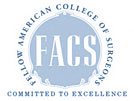On the morning of May 18, a jury in the Roanoke, Virginia Circuit Court returned a verdict of $9 million in favor of a mother and her 10-year-old daughter in a birth injury case. This verdict was 10 years in the making.
Marsha Simpson’s first pregnancy, which had been supervised by a family practitioner affiliated with Carilion down in the New River Valley had been complicated by gestational diabetes — which had been successfully controlled with diet and exercise — and pregnancy-induced hypertension. The pregnancy had gone to 40 weeks, and labor was induced and while lengthy, about 12 hours, was uncomplicated. That child, now 15 years old, is completely normal.
For her second pregnancy in 2001, Marsha returned to the same family practice group. She had been tested between the two pregnancies and found she was not diabetic, but during this pregnancy she was again diagnosed with gestational diabetes. This time she was less successful in controlling her blood sugars. The family practitioner sent her to local obstetrician David Roberts for a consultation.
Where the problems started
At that visit, Dr. Roberts, put her on a small morning dose of insulin and explained that he was going to induce labor between 37 and 38 weeks, but needed to do in amniocentesis to check for fetal lung maturity, which, as the plaintiffs recall, would indicate an increased risk of a macrosomic baby. In the litigation, Dr. Roberts explained the reason for the early induction preceded by amniocentesis was because of the increased risk of late-term fetal demise associated with gestational diabetics on insulin. Interestingly the family practitioner testified at trial that in a conversation between the consultation and the amniocentesis Dr. Roberts had given the practitioner both reasons an explanation for the testing. However when confronted with his deposition testimony which only contained the risk of a macrosomic baby, the family practitioner conceded that he had not been told about the risk of late-term fetal demise.
During the consultation with Dr. Roberts, the plaintiffs said that they were not given information regarding the risks associated with early induction and the amniocentesis, and they particularly were not told that they had alternatives. The defense experts in the case reluctantly agreed that watchful waiting, which would involve regular examinations, weekly non-stress tests and possible ultrasounds was a reasonable alternative. Thus, a major thrust of the case was the failure to provide informed consent for the amniocentesis and early induction.
The testing phase
When the plaintiffs appeared at the hospital for the amniocentesis a seven minute non-stress test was completely normal and entirely reassuring. On ultrasound examination, Dr. Roberts discovered that the placenta was anterior and that the only accessible pocket of amniotic fluid required traversing the periphery of the placenta. No further informed consent discussion was had regarding the increased risk associated with this method of testing. Another informed consent issue was raised here because of the failure to provide information regarding the option of having Marsha come back in a day or two after extensive hydration to see if a pocket could be found that would not require traversing the placenta.
The first pass of the amniocentesis needle was halted because a fetal limb moved into the area. Between the first and second attempts the father noted something dripping on the ultrasound monitor and asked about it. Dr. Roberts told them that it was bleeding, but it was nothing to be concerned about. On the second attempt Dr. Roberts obtained what he described as a “bloody tap“. Dr. Roberts concluded that the sample could not be tested to check for fetal lung maturity and noted that he intended to send the patient to Roanoke to have a perinatologist make a second attempt.
As soon as mom was placed back on the fetal heart monitor abnormalities were noted. The initial heartbeat tracings were in the 60s but quickly came back up into the 90s to 100s range. The normal variability which had existed prior to the amniocentesis was no longer present. Within a few minutes the heart rate came back up into the normal range but in less than 10 minutes became tachycardic. While the fetal heart rate was in the normal range, Dr. Roberts left to attend to his office responsibilities and handed Marsha off to his partner Dr. Terry. Dr. Roberts told Dr. Terry about the bloody tap.
Rapid heart rate and other serious concerns
The nurses called Dr. Terry after them the fetal heart rate had been tachycardic for about 45 minutes. Dr. Terry came in, did not go back and look at the pre-amniocentesis tracings, but did order a biophysical profile. The biophysical profile score came back 4/8, though all of the experts in the case agreed that if the fetal heart tracings were included as a non-stress test the actual score was 4/10. The score of four was based on fetal breathing and level of amniotic fluid. The radiologist also noted a possible hypokinesis of the heart and that there was a partially dilated stomach and fluid filled loops of bowel. He also recommended a level III ultrasound.
In his discovery deposition, Dr. Terry said he got the report of the biophysical profile from a nurse. At trial he claimed he got the report from the radiologist but that the radiologists did not tell him about the hypokinesis, the stomach and bowel or the recommendation for a level III ultrasound. Regardless of who Dr. Terry got the report from, it appears likely that he was told about the positive fetal breathing on the biophysical profile.
After getting the results of the biophysical profile, about 10:30, Dr. Terry called the patient’s primary family practitioner, told him that he felt the patient needed to be induced and asked if the family practice group wanted to handle the induction or if they wanted him to. He agreed that the family practice group would handle it and called his partner who was on call at the hospital for their group so that he could handle the induction. No one consulted the parents about this decision. The plaintiffs’ experts claimed and the defense experts reluctantly agreed that a prompt cesarean section was a reasonable alternative, and no one gave the parents a choice, again failing to obtain informed consent.
Induction begins
When the family practitioner on call finally got around to performing a pelvic exam, he discovered that the condition of the cervix was not favorable and proceeded to give her Cytotec to begin the induction. During the course of the afternoon, the fetal heart rate which stayed tachycardic for several hours with minimal beat-to-beat variability gradually move down into the normal range but the variability stayed reduced throughout the afternoon — about 5:30 as contractions were beginning the first deceleration occurred. Ultimately Dr. Terry was called and performed an emergency cesarean section 45 minutes later.
Tests and complications after birth
At delivery Dr. Terry noted grossly bloody amniotic fluid in his operative report. The Apgar Scores were reported as 5, 5 and 9. The fetus was hypotensive and hypovolemic at birth. Hemoglobin and hematocrit drawn within an hour of birth showed critical levels and the experts of fetal blood loss range from a third to more than half. The surgeon did not note any abnormalities of the placenta and claims that he ordered it sent to pathology, but it never got there — or at least there is no pathology report to be found. No cord blood gases were drawn, but a pH drawn at 42 minutes of life was reported at 7.24. Bloody red mucus was suctioned from the baby immediately after birth and the babies subsequently vomited first bright red blood and then a mixture of dark and bright red blood. There were three subsequent lesser episodes of vomiting of blood, but the color was not noted.
The child was transferred to the University of Virginia by helicopter in the early morning hours and she ended up being hospitalized there for two months. Seizure activity started within the first 48 hours of life and they also vary quickly determined that there had been serious kidney injuries. Ultimately it was determined that there was a diffuse anoxic brain injury resulting in a mild case of cerebral palsy and cortical necrosis resulting in the destruction of the kidneys. During the hospitalization the child was started on peritoneal dialysis which continued until she had her first kidney transplant prior to age 3. That transplant, from a cadaver donor, only lasted about six years and at age 9 she had her second transplant of a kidney donated by a maternal aunt. She has done much better since the second transplant slightly more than a year ago.
Two days after the child’s birth, Dr. Roberts wrote a progress note on the mom’s chart. In it he claimed that the “bloody tap” that he got at the time of the amniocentesis consisted of dark, clotted, old blood and he was concerned it might have represented an antecedent bleed. He did not however mention that in the handoff to Dr. Terry or in the discharge summary that he dictated. The plaintiff’s attorney was successful in getting the court to preclude this document from being introduced into evidence because it was not contemporaneously created. At trial Dr. Roberts was able hold the document and testify that it represented a prior consistent statements since we were claiming that he had changed his testimony, but the document was never exhibited to the jury.
Baby at present
Now 10, Marsha’s second child is a very friendly, social little girl. She has significant cognitive impairment and as a fourth grader (mainstreamed) she is essentially functioning on a pre-kindergarten level. She has a right hemiparesis and her gait is very simian-like. Medical expenses to date were approximately $1.8 million and the cost of her medical and nonmedical future care was within $5 – $7 million.
The defendants and plaintiffs
The defendants were insured by our friends at Pro Assurance, who never offered a dime. The case was defended by attorney Walt Peake. Dave Batten and Lee Ann Smith from North Carolina was brought in to assist with the defense. The case was defended on standard of care and causation. Walt Peake would really like to have settled this case and had made that clear for several years. He had been able to talk Pro Assurance into agreeing to mediation, but the day before, they decided that they weren’t willing to make an offer.
The plaintiff standard of care experts were Dr. Jim Shwayder (OB/GYN) from Louisville, Kentucky and Dr. Larry Borow (OB/GYN) from outside Philadelphia. Dr. Victoria Norwood, the daughter’s treating pediatric nephrologist from UVA, was probably the star expert witness in the case. We arranged for our client to fly to Seattle where a neurological examination by Dr. Steven Glass (pediatric neurology) was videotaped. That videotape was played during Dr. Glass’s direct examination as he explained the significance of the impairments. Dr. Roy Filly (radiology/ultrasonography from UCSF) provided testimony regarding the biophysical profile. Betty Overbey, RN, a life care planner from Richmond, Virginia provided the life care plan.
The defense experts who testified at trial on the standard of care were Dr. Frank Boehm (OB/GYN/MFM) from Vanderbilt and James T. Christmas (OB/GYN/MFM) from Richmond. In addition Dr. Ed Karotkin (neonatology) from Norfolk also chimed in to try and help the defense.
The defense’s professional arguments
Dr. Boehm, videotapes in advance, claimed during the trial that the standard of care did not require the alternative of watchful waiting to be discussed to obtain informed consent. However, he has stated that he did have to be required in his discovery deposition, and after being shown that agreed that it did. Both Dr. Boehm and Dr. Christmas took the position that the defendant’s recommended care complied with the applicable standard of care, and that the care plaintiff experts described should have been provided also complied.
On causation, Dr. Boehm did not have any opinions. Dr. Christmas testified that some unknown bleeding event prior to the amniocentesis caused the dark blood that Dr. Roberts found at the amniocentesis and that the injury had already occurred 1 to 3 days earlier. His testimony was in stark contrast to Dr. Boehm who stated that the normal fetal heart tracings prior to the amniocentesis made it 100% certain that the baby had not yet been injured. Dr. Karotkin had been somewhat confused in his discovery deposition and had testified that the reason why he didn’t think the baby had required significant resuscitation was because that chart documented that the baby was “happy” very shortly after delivery — in reference to the mother’s response to the baby during bonding. Needless to say, Dr. Karotkin had lots of egg on his face, though by the time he got to trial he had figured out his mistake. He testified that there had been a partial placental abruption 1 to 3 days earlier and that this was a source of the blood obtained during the amniocentesis. When asked to explain how that blood had gotten into the impact amniotic sac that existed at the time of the C-section, he testified that the blood drilled a hole through the amniotic sac and then sealed it. The jury didn’t seem to take this testimony well.
Final thoughts on the decision
The plaintiffs had settled with the family practitioners and the hospital for the labor and delivery nurses earlier. The available caps under Virginia law, after deducting the earlier settlement, was $1.4 million, each, for mother and baby. With the nature of the injury here in the size of the verdicts, the constitutionality of Virginia’s statute capping damages in medical malpractice cases should be challenged. In the last few years, several state supreme courts have struck down similar damage cap statutes, and it may be a matter of time before the Supreme Court is asked to reconsider issues previously decided.

Dr. Michael M. Wilson is an attorney and a physician who earned his undergraduate degree from the Massachusetts Institute of Technology and his legal and medical degrees from Georgetown University. He has focused in the area of medical malpractice for more than three decades and secured more than $100 million in settlements and verdicts on behalf of clients throughout the country. He is admitted to practice in the District of Columbia and New York as well as the U.S. Court of Appeals for the District of Columbia and the U.S. Supreme Court. He is listed in America’s Top 100 High Stakes Litigators.













